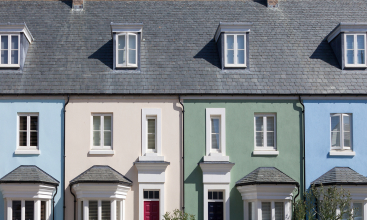
While house prices have fallen, they appear to be broadly stabilizing. On one hand, higher mortgage rates push house prices down as consumers are less willing to borrow money, thereby cooling demand. On the other hand, however, supply constraints and a tight labor market are putting a floor on prices.
“Housing indicators have been choppy for the last few months and have not provided a clear message,” said Allan Monks, a U.K. economist at J.P. Morgan. “While rising mortgage rates imply further declines may materialize in the year ahead, weak supply is preventing house prices from contracting, and there is no real sign of a more abrupt slowdown.”
Indeed, just 233,000 new homes were built in 2021/2022, falling short of the U.K. government’s target of 300,000 new homes per year. In addition, the number of available properties for sale in the U.K. was 12% lower in June 2023 compared with June 2019, according to Rightmove. “We continue to see a structural mismatch between the supply and demand of housing, including cutbacks to new residential building projects, which will likely support prices,” Sinha said.
Looking ahead, supply will likely remain a limiting factor in the medium term. “While sales rates for the U.K. housebuilding sector have held up well at levels above the lows seen after the September 2022 mini-budget, potential softening over the summer is likely to put 2024 volume recovery in jeopardy. We now expect a 25% decline in volume for the 2023 calendar year, and a stable trend in the 2024 calendar year on average,” said Rajesh Patki, who is part of the European Construction and Building Materials research team at J.P. Morgan.
U.K. house prices are also being supported by the labour market, which remains resilient despite some signs of loosening. “This has limited the number of forced sellers so far and prevented a large rise in the supply of housing,” Sinha noted.
In light of these factors, U.K. house prices could be beginning to stabilize — at least for now. “Overall, it appears as though house prices are broadly flat rather than falling, underpinned by weak supply,” Monks said. “As rates rise further, prices are likely to show more declines. But the downtrend may have finally been arrested for the time being and house prices could hover around current levels for a while longer.”
